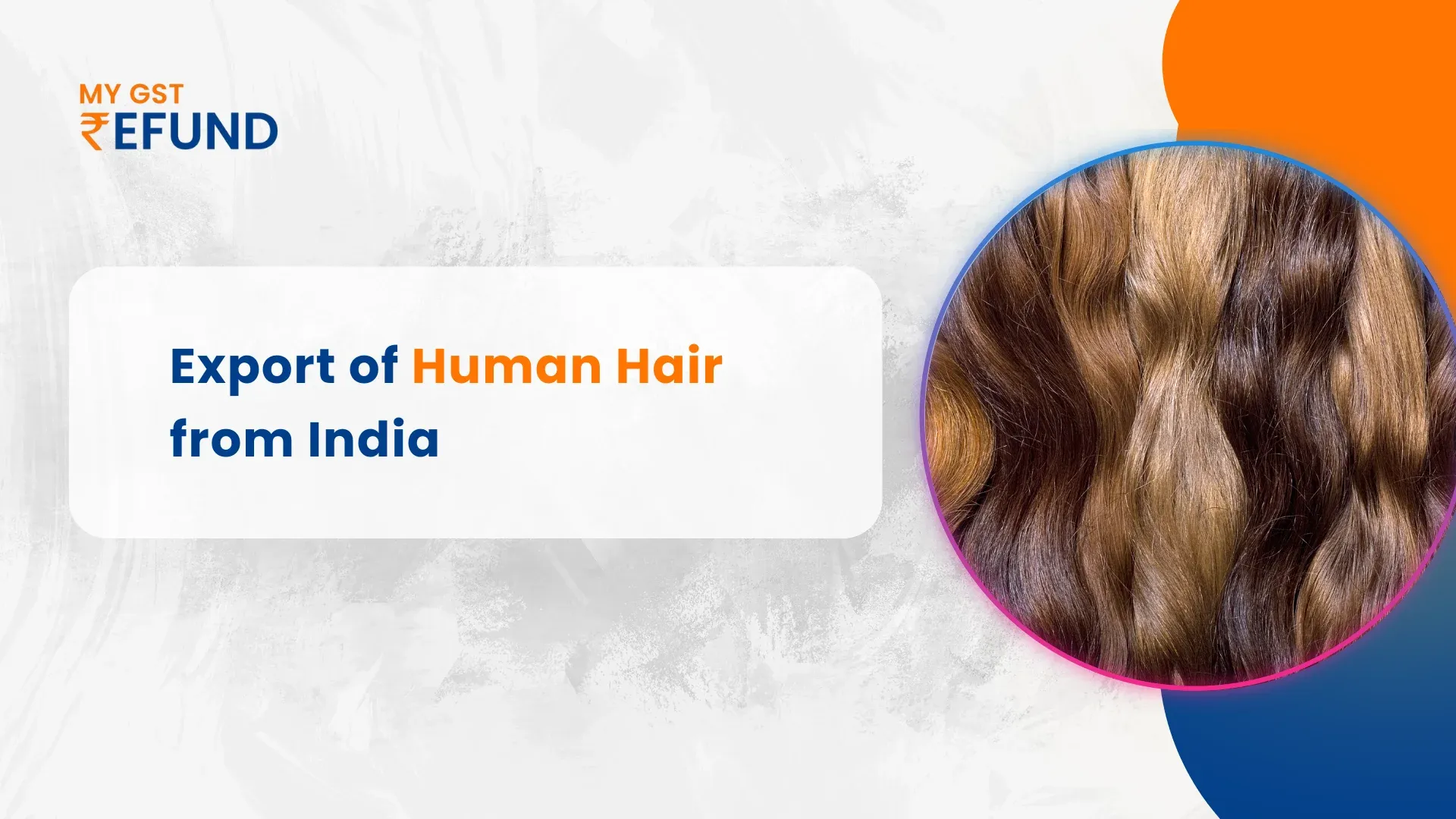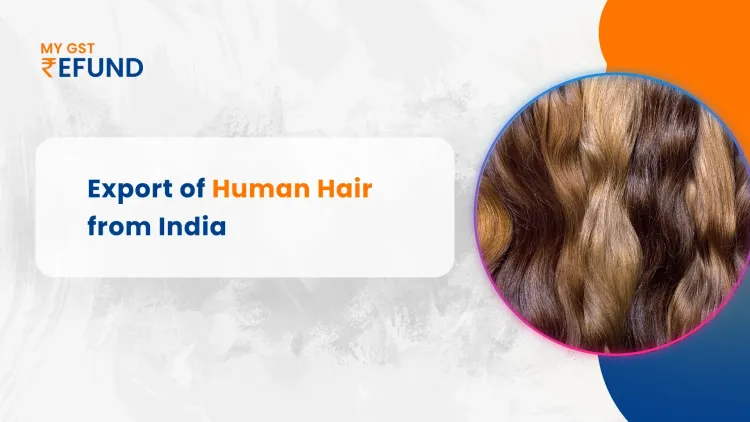Export of Human Hair from India
The human hair export industry represents a major economic sector because India is the top-ranking exporter of human hair among all nations. Human hair exports function under particular HS codes that classify goods for international trade and customs purposes. The export of human hair in India requires the use of HS Code 05010010 and HS Code 05010020.
HS Code 05010010: Human Hair (Unworked, Not Dyed)
The export of unprocessed human hair that remains in its natural state falls under code 05010010. Natural human hair and hair collected from religious locations are also exported under this HS classification.
Interacting with unworked hair signifies examining hair in its untreated state without any chemical procedures, including dyeing or bleach treatment.
Exports Under HS Code 05010010:
Human hair in its unprocessed and untreated form belongs to this export category.
Indian exports classified under this code primarily move towards destination nations that work on the hair for subsequent use in wigs and hair extensions, as well as other products.
The main imports of human hair go to Asian, European, and Middle Eastern regions.
HS Code 05010020: Human Hair (Worked, Dyed, or Bleached)
The tariff regulations cover worked, dyed, and bleached human hair products. The processing stage converts this hair type into material suitable for manufacturing wigs, hairpieces, extensions, and cosmetic items.
Exports Under HS Code 05010020:
Industrial human hair intended for global markets includes hair types that have obtained desired specifications through dyeing and bleaching processes.
Manufactured hair becomes a key component for creating wigs, alongside hair extensions and multiple types of styling products, which are used in the beauty and fashion industries.
The USA, along with China, South Korea, and European nations, remains key among the international importers of received and processed human hair from India.
Export Policy: The Export Policy of raw Human hair is amended from 'Restricted' to 'Prohibited'. However, export shall be 'Free' if the FOB value is US Dollars 65 or above per Kilogram.
Regulations and Export Procedures:
Product Classification: The correct HS Code labelling between 05010010 and 05010020 should be performed correctly to meet tariff requirements and international export standards.
Export of Human Hair from Temples (Religious Hair):
- The donation of hair through tonsuring at Indian temples provides a significant source of exporting human hair from religious devotees. Raw human hair originates from this primary exporting source.
- The Government of India maintains regulatory control over temple hair exports while establishing precise procedures for exporter operations that obtain hair from sacred places.
GST and Taxation on Exports: Under GST (Goods and Services Tax) rules in India, exports of human hair benefit from a zero rating, meaning they do not need to pay GST taxes, and exporters can seek refunds for taxes incurred in their procurement process.
Quality Control & Certification: Human hair exporters must verify that their products comply with the quality requirements of their target foreign markets, especially when dealing with processed hair. International market access depends on product quality certification and proper certifications.
Export Authorization/Prohibition: The Policy is prohibited w.e.f. 10-02-2025. However, Export shall be Free IF the FOB value is USD 65 or above per Kilogram
Global Market for Human Hair Exports from India:
India holds the position as the number one country exporting human hair across the worldwide market. Indian exports of human hair have risen extensively because of substantial temple donation activities, along with extensive wig and extension requirements. Key export markets include:
USA: The beauty and fashion business requires large quantities of processed hair from India, making it a top export destination.
China: Indian raw hair finds its largest market outside the country for continued processing.
Middle East: The UAE, Saudi Arabia, and Turkey buy significant amounts of unprocessed and processed human hair products.
European Union: EU countries purchase processed human hair items from different countries within the alliance.
Role of Authorized Dealer (AD): Banks and Financial Institutions, under their Authorized Dealer category, assume a fundamental role in enabling foreign payments during human hair export transactions. The banking system helps exporters by executing foreign currency payments, enabling exporters to obtain foreign currency payments while supplying the required customs documents for clearance procedures.
Governing Body for Export of Human Hair in India:
Directorate General of Foreign Trade (DGFT):
- As the lead authority of India, DGFT is responsible for managing international trade policies and controlling export procedures for human hair and other goods. The Export-Import (EXIM) Policy emerges from the DGFT to guide the procedures for sending products from India.
- The Directorate General of Foreign Trade checks that exporters execute their export responsibilities while adhering to all necessary legal and regulatory requirements.
- Export promotion measures mentioned in the Foreign Trade Policy (FTP) incorporate human hair among its exported items.
Customs Department:
- The Indian Customs Department is the leading authority that supervises human hair exports. International trade regulations must be followed for human hair shipments, and HS codes need to be used appropriately to fulfill payment obligations, including duties or taxes.
- Human hair export clearance takes place at ports, and the Customs Department is responsible for ensuring legal and procedural compliance.
Ministry of Commerce and Industry: The Ministry of Commerce and Industry is the priority organizing body for international trade policy development, including human hair exports. It supports DGFT and other government agencies under its supervision to enable easy trade operations.
Export Promotion Councils (EPCs): Export Promotion Council for Handicrafts (EPCH), along with other trade promotion bodies, can offer support to human hair exporters because the product sector links with the cosmetic and handicraft fields. The councils assist their members through guidance and support and organize activities at international trade exhibitions.
Government Initiatives for Human Hair Exports:
Foreign Trade Policy (FTP) – Incentives for Exporters:
- The Indian Foreign Trade Policy includes export-oriented programs through which businesses may promote their human hair products. The Policy enables exporters to receive multiple benefits that enhance their export market performance.
- The RODTEP initiative serves as a mechanism to give incentives to exporters through benefits that facilitate the export of human hair, together with other specified products.
National Export Insurance Account (NEIA):
- The National Export Insurance Account stands as an export transaction insurance program that offers security to human hair exporters by ensuring payment in case buyers default or delay payments.
- The program helps cautious business owners enter international export markets for human hair, simplifying the development of organizations' global markets.
Export Promotion and Marketing Initiatives:
- The Indian government supports foreign marketing activities through its administrative body, DGFT. Promoting activities undertaken by exporters include human hair exports, specifically processed hair, which grants exporters enhanced visibility in international trading markets.
- Indian human hair products gather potential buyers at trade fairs and exhibitions related to wigs, hairpieces, and beauty products.
Ease of Doing Business:
- Through its Make in India and Ease of Doing Business initiatives, India has improved trade facilitation, which includes reduced red tape and simplified port clearance procedures supported by fast customs processing using digital systems.
- The described initiatives function to minimize bureaucracy and maximize the operational effectiveness of human hair export companies.
Export Incentives for Human Hair Exporters:
RODTEP:
- The incentives through RODTEP benefit companies exporting human hair, among other goods. Through its duty credit scrips, export companies gain the flexibility to apply their credits either to pay duties or trade them in the market for monetary gain.
- The plan intends to enhance the global competitiveness of Indian exports while encouraging firms to send human hair products and other goods abroad.
RODTEP Incentive – AA/EOU/SEZ
Annexure –IA
RODTEP Incentive – DTA Export
Export Credit from Banks:
- The Export-Import Bank of India (EXIM Bank) provides financial backing to human hair exporters and other customers through its services. Through these services, exporters gain access to banking credits alongside financial instruments, helping them obtain the capital needed to build their business operations.
- ECGC functions as a credit insurance company that provides human hair exporters with coverage against bankrupt foreign clients.
Duty Drawback Schemes:
- Through the Duty Drawback Scheme, exporting companies can retrieve paid customs duties that support the material production of wigs and extensions with human hair.
- The scheme lowers production expenses for human hair exports and improves their market competitiveness globally.
Annexure – 2
AIR Duty Drawback
Interest Subsidy Scheme:
Exporters participating in selective sectors of human hair export qualify for interest rate support via the government's Interest Equalization Scheme. Under this scheme, exporters can get loans for export functions at significantly decreased rates.
Read More: Export Incentives in India: Benefits and Types of Incentives
Export Performance of Human Hair from India
The global market for human hair exports recognizes India as its top leader because it sends its hair primarily to buyer regions in the United States, China, Europe, and the Middle East. The world receives a substantial amount of its human hair exports from India through both unprocessed and dyed and bleached styles.
Export Volume & Value:
- Reports from the Export Promotion Council for Handicrafts (EPCH) and other trade organizations confirm that India is the largest exporter of raw human hair originating from the temple donation system.
- Human hair exports from India have surged because markets worldwide want extensions, wigs, and beauty items. Unprocessed human hair exports experience high demand from both the USA market, which uses the hair for wigs and extensions, and China, where processing leads to hair resales.
Major Export Markets:
- Processed hair from the USA functions as one of the leading exports, supplying the market for wigs, hairpieces, and other beauty products.
- Much of the raw human hair exported from India goes to China for additional manufacturing.
- The countries Saudi Arabia, UAE, and Turkey purchase raw and processed hair stocks as key markets in the Middle East.
Government Support and Export Performance:
- Indian human hair export performance has received additional support from three government initiatives, including MEIS, Export Credit Insurance, and the development of export zones and advanced logistics networks.
- Indian exports of human hair have expanded because the cosmetic and fashion industries need premium hair extensions and wigs.
Pro Tips: Plan Ahead and Easily Calculate Your GST Refund with Our Online GST Refund Calculator Tool!
Conclusion
India's human hair export sector is flourishing thanks to various government initiatives, export incentives, and a streamlined regulatory framework. Through support from the DGFT alongside the Customs Department and other governing bodies of India, the industry achieved global market expansion by facilitating its export processes. The combination of MEIS incentives with duty drawbacks and credit insurance programs delivered significant growth to the sector. This industry shows promising signs of developing into a prominent global market leader because India leads the human hair market.
Indian export of human hair products under HS Code 05010010 (unworked hair) and HS Code 05010020 (worked hair) supports the national export sector. This industry operates through three supporting segments, which consist of religious donations alongside domestic hair resources and worldwide established markets that accept wigs and hairpieces. The export procedure follows basic steps, but traders should carefully follow DGFT rules, standard customs procedures, and international trade guidelines. The worldwide consumption pattern of human hair merchandise indicates India's human hair exports will continue to grow successfully.
Frequently Asked Questions (FAQs)
1. What is the HS Code for the export of human hair from India?
The export of human hair from India is classified under HS Code 05010010 for unworked hair and HS Code 05010020 for worked or processed hair.
2. Can raw human hair be exported from India?
Yes, but with conditions. As per DGFT Notification No. 59/2024-25, the export of raw human hair is prohibited unless the FOB value is USD 65 or above per kilogram, in which case the export is free.
3. What are the major countries importing Indian human hair?
Indian human hair reaches top markets in the USA, China, South Korea, the United Arab Emirates, Saudi Arabia, Turkey, and several European nations.
4. Is GST applicable on the export of human hair from India?
No, exports are zero-rated under GST. Exporters can claim refunds on input taxes paid during procurement.
5. What certifications are required for exporting human hair?
While there are no specific global certifications, quality control and compliance with importing country standards are essential. Some buyers may require third-party certifications for quality assurance.
6. How do exporters benefit from RoDTEP in human hair export?
Under RoDTEP, exporters of human hair are eligible for a duty credit of 0.30% to 0.50% of the FOB value, which helps offset input taxes and logistics costs.
7. What is the role of DGFT in the export of human hair?
The Directorate General of Foreign Trade (DGFT) regulates human hair exports from India by establishing export policies and updating the EXIM guidelines before issuing licenses and notifications.
Related Posts








